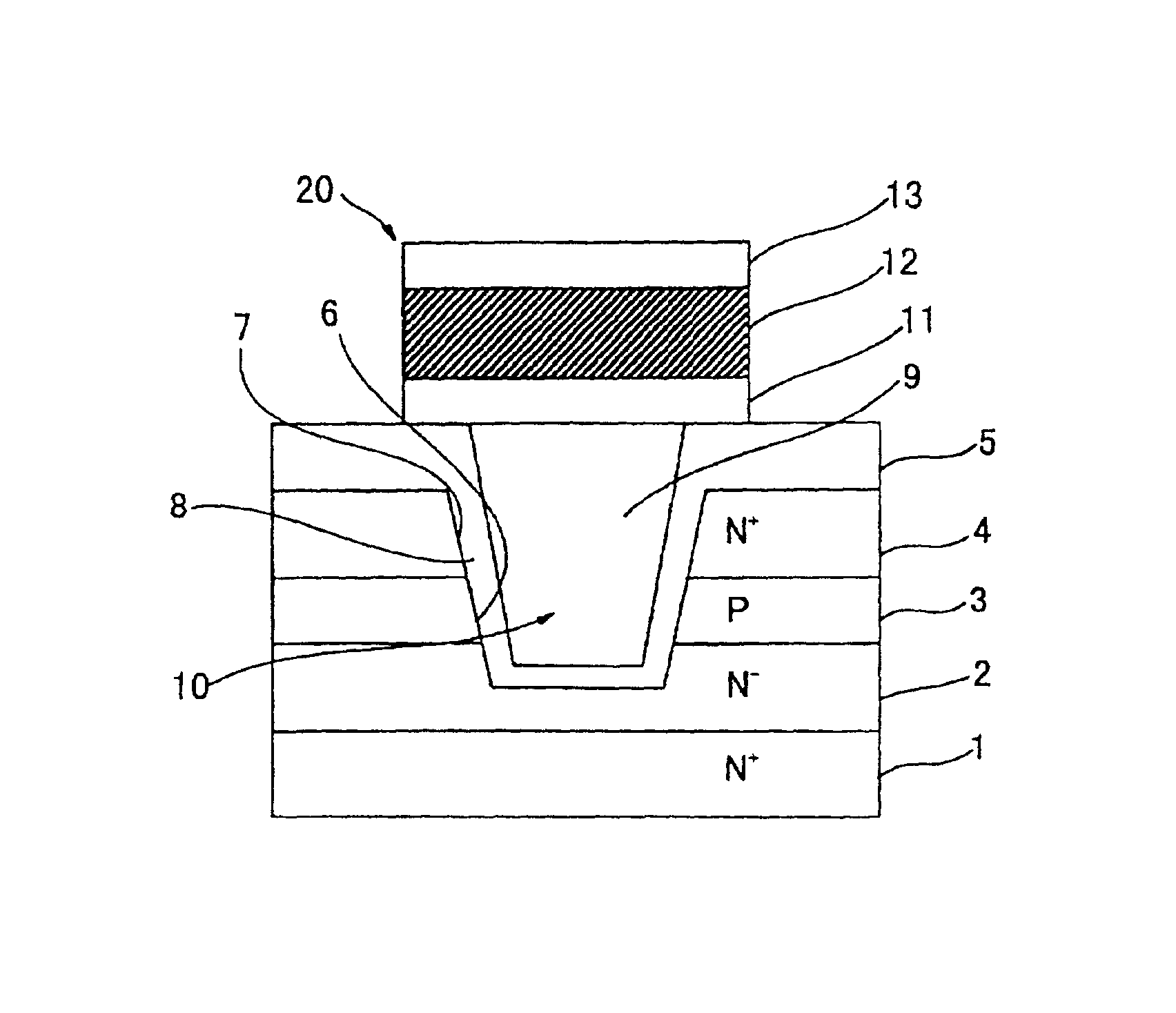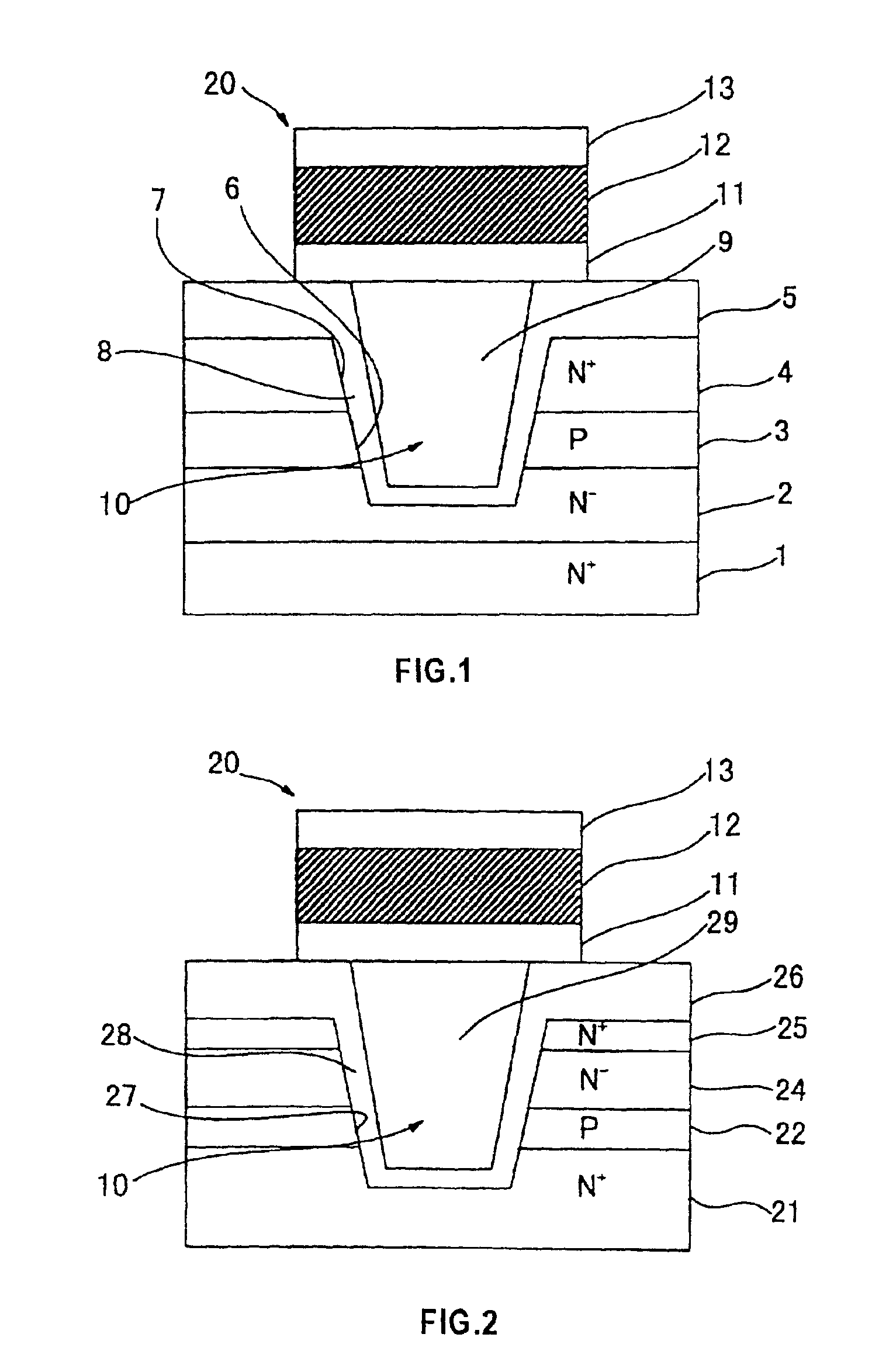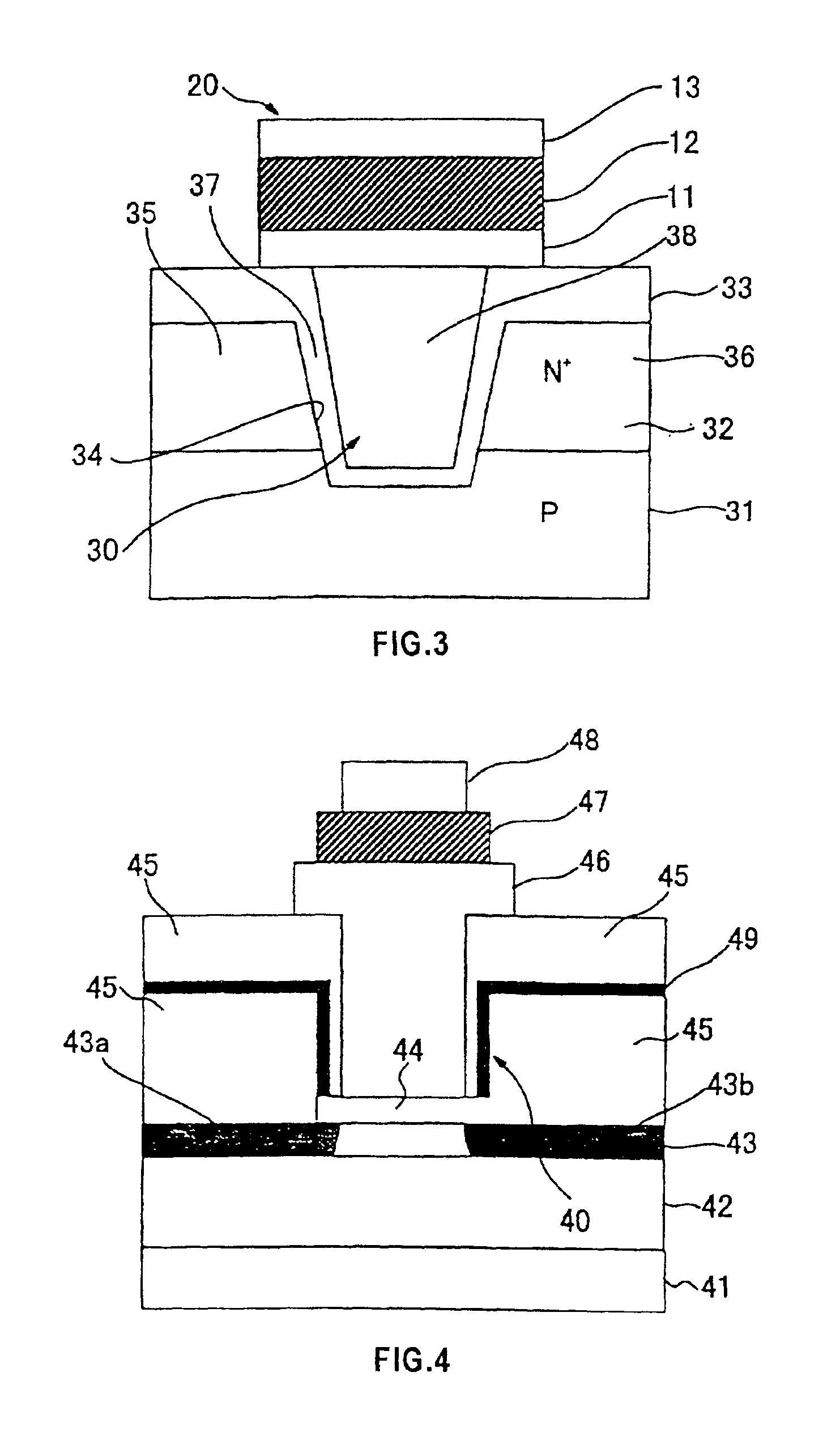Transistor-type ferroelectric nonvolatile memory element
a ferroelectric non-volatile memory element, transistor-type technology, applied in semiconductor devices, semiconductor/solid-state device details, capacitors, etc., can solve the problems of destroying data held at the time of reading out data, limiting the area, and reducing the use of electric current and electric power, so as to reduce the area of memory cells, shorten the channel length, and improve the effect of memory cell area
- Summary
- Abstract
- Description
- Claims
- Application Information
AI Technical Summary
Benefits of technology
Problems solved by technology
Method used
Image
Examples
first embodiment
[0050]the present invention will be described with reference to FIG. 1. In this embodiment, an N−-type layer 2 is epitaxially grown on an N+-type silicon substrate (S) 1 that serves as a drain layer. In the N−-type layer 2 are doubly diffused P-type impurities and N-type impurities to successively form a P-type layer 3 that serves as a base layer and an N+-type layer 4 that serves as a source layer. An insulating layer 5 of silicon oxide is laminated on the N+-type layer 4 by the thermal oxidation. A trench 6 is formed in the substrate 1 reaching the N−-type layer 2 penetrating through the insulating layer 5, N+-type layer 4 and P-type layer 3. The trench 6 has side walls 7 that are inclined to some extent such that the opening portion thereof is slightly larger than the bottom portion thereof. The inner surfaces of the trench 6, i.e., the side surfaces and the bottom are covered with a silicon oxide film that serves as a gate oxide layer (I) 8.
[0051]The trench 6 is filled with, for...
third embodiment
[0058]FIG. 3 illustrates the invention. This embodiment has a more simple MIS transistor structure 30. An N+-type layer 32 is formed by diffusion on a P-type silicon substrate 31. An insulating layer 33 of silicon oxide is laminated on the N+-type layer 32. A trench 34 is formed to reach the P-type silicon substrate 31 from the insulating layer 33 penetrating through the N′-type layer. The trench 34 divides the N+-type layer 32 into right and left parts, which constitute a drain region 35 and a source region 36, respectively. A gate oxide film 37 is formed on the inside of the side walls and bottom surface of the trench 34. The trench 34 is filled with a conductor 38 such as polycrystalline silicon to thereby form a MIS structure 30. An MFM structure 20 is formed on the flat trench 34 like in FIG. 1.
[0059]In the structure of the third embodiment of FIG. 3, too, the effective area of the capacitance of the MIS structure 30 is determined by the gate oxide film 37 on the inner surface ...
fourth embodiment
[0062]Next, described below with reference to FIG. 4 is this invention. This embodiment uses an SOI (silicon-on-insulator) substrate. If an MIS structure and an MFM structure are stacked on a thin SOI layer, then, it becomes difficult to form a deep silicon trench that was formed in the above embodiments. Therefore, an MIM (metal-insulator-metal) structure is formed between the MIS structure and the MFM structure to increase the effective area of the capacitance of the MIS structure. A region for forming a channel is constituted in the middle portion of the SOI layer 43, and a gate oxide film (I) 44 is laminated thereon.
[0063]That is, an insulating film 42 is laminated on a semiconductor substrate 41, and a semiconductor layer (S) 43 is laminated thereon. Both sides of the semiconductor layer 43 are forming a source region 43a and a drain region 43b, respectively. A region for forming a channel is constituted in the middle portion of the semiconductor layer 43, and a gate oxide film...
PUM
 Login to View More
Login to View More Abstract
Description
Claims
Application Information
 Login to View More
Login to View More - R&D
- Intellectual Property
- Life Sciences
- Materials
- Tech Scout
- Unparalleled Data Quality
- Higher Quality Content
- 60% Fewer Hallucinations
Browse by: Latest US Patents, China's latest patents, Technical Efficacy Thesaurus, Application Domain, Technology Topic, Popular Technical Reports.
© 2025 PatSnap. All rights reserved.Legal|Privacy policy|Modern Slavery Act Transparency Statement|Sitemap|About US| Contact US: help@patsnap.com



